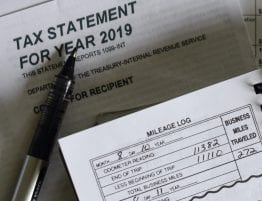
The Coronavirus Aid, Relief, and Economic Security (CARES) Act was introduced to counter the economic damage caused by the coronavirus pandemic. This $2 trillion stimulus package focuses on financially supporting individuals, businesses, state and local governments, workers, independent contractors, and hospitals.
The package also includes relief for savings and retirement benefits of individuals. This section of the CARES Act provides special distribution options and rollover rules for retirement plans and IRAs, and expands permissible loans from certain retirement plans. Though the IRS and the Department of Labor have issued guidance, Employee benefits and estate planning attorney, Albert Feuer, says that the new guidance provided leaves open many issues and further guidance is required. Bloomberg Tax discusses:
“WHICH COVID CASH FLOW RELIEF DOES THE IRS Q&A DOCUMENT DISCUSS?
The IRS Q&A document discusses the cash flow relief of the CARES Act for qualified individuals with savings and retirement benefits. But, the document does not discuss the similar cash flow relief in IRS Notice 2020-23, which was released on April 9, 2020, and defers all plan loan due dates between April 1, 2020 and July 14, 2020, for all borrowers until July 15, 2020. The CARES Act, in contrast, defers plan loan due dates between March 27, 2020, and Dec. 31, 2020, for a year, but only for a limited subset of those borrowers. IRS Notice 2020-23 also extends all 60-day periods to complete rollovers that would otherwise end between April 1 2020 and July 14, 2020 for all recipients until July 15, 2020. The CARES Act, in contrast, extends the due date to complete rollovers for distributions between Jan. 1, 2020, and Dec. 30, 2020, until three years after the date of receipt for a limited set of such recipients.
WHO QUALIFIES FOR CARES ACT CASH FLOW RELIEF?
The IRS Q&A document avoids the most significant relief issue, namely, who may obtain the CARES Act cash flow relief for qualified individuals with savings and retirement benefits by enhancing provisions for direct loans and indirect loans (repayable distributions) of such benefits. The document merely restates the explicit statutory factors as a bulleted list followed by flush language declaring that the IRS may exercise its authority to expand ‘the list of factors taken into account to determine whether an individual is a qualified individual as a result of experiencing adverse financial consequences.’ IRS Q&A document, A-3. Thus, it is unclear how wide a net the IRS wishes to cast. However, the longer the IRS delays this guidance the longer will plan administrators be unable to stray from the specific factors the CARES Act sets forth. For example, they will not be able to treat individuals whose work hours have not been reduced, but whose compensation was reduced, or individuals furloughed as a result of the Covid-19 economic downturn, as qualifying individuals. It is reasonable to ask whether this is the result Congress intended by giving the IRS the discretion to add ‘other factors.’ CARES Act Section 2202(a)(4)(ii)(III).
WHEN MAY PLAN ADMINISTRATORS RELY ON INDIVIDUAL CERTIFICATIONS?
The IRS Q&A document states that a plan administrator may rely on an individual’s qualified individual certification for the purposes of receiving a coronavirus-related distribution ‘unless the administrator has actual knowledge to the contrary.’ IRS Q&A document, A-11. It is reasonable to ask whether this is the result that Congress intended, and whether the IRS has the authority to impose this condition.
The CARES Act, on the other hand, provides that the plan administrator ‘may rely on an employee’s certification,’ without limiting such reliance in any manner. CARES Act Section 2202(a)(4)(B). Given that plan sponsors and administrators prefer to minimize risks, this additional condition will discourage them from providing any relief the CARES Act does not require a plan to provide. And the CARES Act provisions are more explicit than previous disaster-relief provisions. There was no reliance or certification provision for establishing eligibility for similar KETRA relief. Thus, the IRS had the statutory authority to find in the KETRA Notice that for KETRA purposes the plan administrator could rely on reasonable representations unless the plan administrator had actual knowledge to the contrary.
The IRS Q&A document’s limit on plan reliance would imply that the certification must describe the basis for the certification. Otherwise, the administrator may not be able to determine whether the basis was incorrect, because it would have no idea what the basis is. For example, the plan administrator would generally know if the plan sponsor had reduced a participant’s work hours. In such case, there would be no reason to request a certification from the participants.
The IRS Q&A document provides that the plan administrator may similarly rely on representations by a beneficiary or inactive participant seeking a coronavirus-related distribution.IRS Q&A document, A-11. This is consistent with the statute, which requires reliance for “employees” seeking a coronavirus-related distribution, CARES Act 2202(a)(4)(B), but is otherwise silent about reliance. This broadening of reliance is helpful for a plan administrator deciding whether, as required under the CARES Act, a beneficiary or inactive participant is entitled to decide whether taxes are to be withheld from any coronavirus-related distribution. This requirement arises from Cares Act Section 2202(a)(5) that uses the same language exempting these distributions from mandatory withholding as Cares Act Section 2203(b) uses to do so with respect to distributions that would otherwise be minimum required distributions for 2020.
The IRS said nothing further about certification procedures or reliance on representations for the purposes of a beneficiary or an inactive participant seeking a coronavirus-related distribution, or of the loan relief provisions.
DOES THE CARES ACT REQUIRE PLAN ADMINSTRATORS TO DEFER DUE DATES ON PLAN LOANS?
The IRS Q&A document also declares that ‘an employer may … choose not to change its … loan repayment provisions.’ IRS Q&A document, A-9. Prior to this guidance, many administrators appear to believe that they have such discretion, and could thereby avoid the administrative burden of implementing a policy to defer plan loan due dates. For example, Bradford Campbell, Consider Near- and Long-Term Issues Before Implementing CARES Act Provisions, Plan Sponsor (May 4, 2020) reported that only 56% of surveyed plan sponsors plan to defer plan loan due dates. The document’s basis for the discretionary conclusion is a reference to the Section 5.B holding of the KETRA Notice. IRS Q&A document A-8. However, there was no basis for the conclusion in that section. That may reflect the fact that the conclusion is contrary to the language of the statute.”
“The IRS Q&A document also declares that ‘if a loan is outstanding on or after March 27, 2020, and any repayment on the loan is due from March 27, 2020, to December 31, 2020, that due date may be delayed under the plan for up to one year.’ IRS Q&A document A-8 (emphasis added). As discussed above the statute provides that the delay is not ‘for up to one year,’ but for precisely one year, although a borrower may choose to not take full advantage of any of the due date deferrals by making an earlier loan payment. If that is the intended meaning of the declaration, it is correct. If the meaning is that the plan administrator may choose to defer the plan loan dates by less than a year, it is incorrect as discussed above.”
“WHICH DISTRIBUTION AND REPORTING RULES DOES THE CARES ACT LEAVE UNCHANGED?
The IRS Q&A document correctly observed that the joint and survivor requirements and the IRC Section 401(a)(36) restrictions on money purchase plan distributions govern coronavirus-related distributions.IRS Q &A document, A-10. The IRS Q&A document also clarified that eligible retirements plans, which include individual retirement accounts and individual retirement annuities (IRAs), will have to report any coronavirus-related distributions, like other distributions, on a Form 1099-R, even if the individual repays the distribution to an eligible retirement plan (including an IRA) in the same tax year. IRS Q&A document A-14.”
Fill out the form for a free and confidential consultation.









